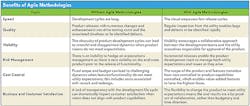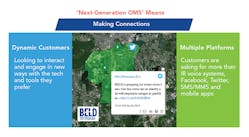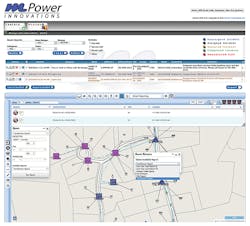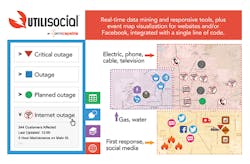“Mr. Watson, come here. I want to see you!” On March 10, 1876, those nine words forever captured the essence of innovation and collaboration. Together, in a laboratory situated in the heart of Boston, Massachusetts, U.S., Alexander Graham Bell and Thomas Watson laid the foundation of today’s telecommunications grid and global connectivity. But the innovation did not stop there. Just 16 years later, in 1892, Watson formed the Braintree Electric Light Department (BELD), located only 13 miles (21 km) from where that historic first telephone call took place. He was again implementing innovation. He sought to bring electricity to the city of Braintree, Massachusetts.
For BELD, it is interesting to reflect on how Watson, its prime benefactor, initiated the ongoing corporate culture of implementing innovation fast. In the days of Watson, there was no concept of the smart grid, the interconnectivity of devices and systems as delivered by overlaying electric and telecommunications infrastructure. Yet, it is clear — through exploration of BELD’s history — Watson recognized the role of collaboration and was undoubtedly the first to embrace the convergence of electric and telecommunications grids.
This history, rich in innovation, puts BELD in a unique position in the industry. It is not just one of the country’s oldest municipal electric utilities, it is also a utility that embraces a legacy of innovation to help drive the utility forward.
How to Implement Innovation Fast
A well-planned step-by-step technology roadmap has enabled BELD to showcase the role collaboration plays with innovation. Bell’s original collaboration with Watson to build the telephone is the perfect analogy to how BELD views its relationship with product and service providers. Collaboration is the key to success. The moniker of information technology/operational technology (IT/OT) convergence may have just emerged, but the industry has long recognized the underlying value. The value of a system, technology, process and so forth grows exponentially as each individual item becomes interconnected. This is a key point: BELD believes interoperability is not a requirement but rather an enabler of innovation.
Implementing innovation fast means embracing collaborative technologies and techniques that empower better results. To achieve this, BELD has embraced Agile methodologies alongside its product and service providers with the following strategic drivers:
• Use Agile methodologies for software development.
• Require vendors to embrace interoperability best practices.
• Use auto-scaling server groups in the cloud to reduce infrastructure costs.
• Use software application program interfaces (APIs) for functionality created by experts in their field.
• Avoid vendor lock-in by embracing pieces of technology from multiple sources.
• Introduce product and service providers to each other, and strengthen their solutions by promoting interoperability.
• Don’t be afraid to revisit the value of a developed solution.
BELD partners DataCapable and mPower Innovations have long recognized how Agile methodologies can drive the success of software projects within the utility industry. Both firms are leaders in this approach to software development. Agile development enables teams to respond quickly to the changing requirements of the end customer by embracing incremental work packages. For years now, Agile development has been the preferred approach over waterfall or sequential development, and it aligns with BELD’s desire to implement innovation fast.
Agile Methodologies at Work
To embrace outage optimization, visualization and event response, BELD turned to industry leader mPower Innovations to achieve the utility’s outage management system (OMS) vision. The overall ease of use, powerful reporting capabilities and built-in network trace-flow capability of mPower’s OMS would meet BELD’s strategic needs. However, the utility wanted other capabilities that would require collaboration — specifically, the inclusion of call capture and response management components. BELD wanted the ability to gather key outage information easily from the customer as well as an interactive dashboard to track and coordinate outage response efforts. Enter Agile methodologies.
In December 2009, key personnel from mPower and BELD met to define a framework for the new mPower OMS with the call capture and response management additions. Following this meeting, mPower began system development in January 2010 and testing took place at BELD in April 2010. The iterative and incremental value of Agile methodologies enabled BELD to implement new and exciting features in just four months.
Another Agile Success
To embrace customer engagement and the role of the digital customer, BELD turned to industry newcomer DataCapable to optimize the role of social media, two-way text messaging and event presentation. For DataCapable, this meant listening to BELD’s requirements and then translating the utility’s needs into overarching industry value. Agile provided the flexibility needed to implement bleeding-edge technology on an extremely tight timeline.
Over the past two years, the teams at BELD and DataCapable have explored and built functionality that addresses social listening for brand conversations on social media, the role of two-way text messaging to report grid events, and outage and event presentation on BELD’s website as well as on its Facebook page. Together, BELD and DataCapable have embraced Agile to provide the flexibility to explore value before spending resources and time on those areas that do not realize benefit.
Be Prepared to Collaborate
Following BELD’s history of collaboration, in the fall of 2016, the team introduced mPower and DataCapable to one another. The vision was clear: automate the process by which the customer-facing outage map is updated and create new mechanisms (text messages, automated calls and social media) by which events are reported to the OMS. The schedule also was clear; this needed to be done by the close of 2016.
While mPower and DataCapable have distinct product features and subject-matter expertise in their respective fields — utility systems and customer engagement — the role of Agile and best practices with software development simplified the integration process. Together, the teams at BELD, DataCapable and mPower went to the drawing board to capture utility needs, define functionality and develop capabilities that aligned with where BELD and the industry must go.
As a result, the OMS has been optimized and enhanced with the unstructured data the utility’s customers provide. This includes social media, text messaging and other data sets that provide outage and event visualization. Customer engagement platforms have been enhanced by automating the process by which data is displayed and providing customers with a self-service tool that lowers call volumes during moments when the grid is under stress.
Drive Innovation
The challenges of the late 1800s electric and telecommunications grids mirror the challenges of today: provide reliable, safe and efficient electric and telecommunications grids that pass savings back to customers. And while technology is a key enabler, change can only happen with collaboration.
Looking forward, BELD personnel have worked closely with mPower on design specifications for a new work order software application that will be integrated with the OMS. This will enable BELD to manage field operations more efficiently for both outage- and non-outage-related incidents.
By adopting the structure of Agile methodologies, BELD has been able to form new and exciting relationships, such as with DataCapable and mPower. This has enabled the utility to realize its connected grid visions and pass the value onto its customers. It is a stark reminder how those early influential words — “Mr. Watson, come here. I want to see you.” — can be reapplied to BELD’s views of product and service providers. “Smart grid innovators, come here. BELD wants to see you.”
Acknowledgement
The author wishes to thank mPower Innovations, particularly Jason Brown and Greg Calcari, for support in the writing of this article. Similarly, the support and comments from Adam Narkiewicz and Peter DiSalvo of DataCapable were extremely helpful.
Gail Cohen is the manager of support services at Braintree Electric Light Department. With more than 30 years of utility experience, she is responsible for the daily management of customer-facing personnel and associated management systems. She is directly credited with exploring and defining the value of customer web presentment as well as leveraging advanced systems and data to support customer-related issues.
Sidebar:Marriage of Collaboration and Innovation
Over the past 10 years, Braintree Electric Light Department (BELD) has been a leader in implementing emerging grid
technologies. Recent smart grid implementations showcase the utility’s role as a rapid adopter and implementer of innovation.
- 2009: BELD participates in the design, development and initial deployment of mPower Innovations’ outage management system (OMS).
- 2010: BELD completes the implementation of an electronic work order system in preparation for an advanced metering infrastructure (AMI) deployment.
- 2011: BELD starts its smart metering implementation, using AMI, and completes installations in 2012. BELD installs all meters with internal crews.
- 2012: BELD completes its smart metering implementation.
- 2013: BELD works with mPower Innovations on the development and deployment of an automated AMI-to-OMS interface. BELD starts its meter data management implementation.
- 2014: BELD completes its meter data management implementation in addition to customer web presentment of energy usage and alarm configurations.
- 2015: BELD starts its customer engagement implementation of DataCapable’s UtiliSocial platform, which includes customer web presentment of outages.
- 2016: BELD participates in the initial design of mPower Innovations’ work order management system.
- 2017: BELD collaborates with mPower and DataCapable to integrate the OMS with customer engagement.









